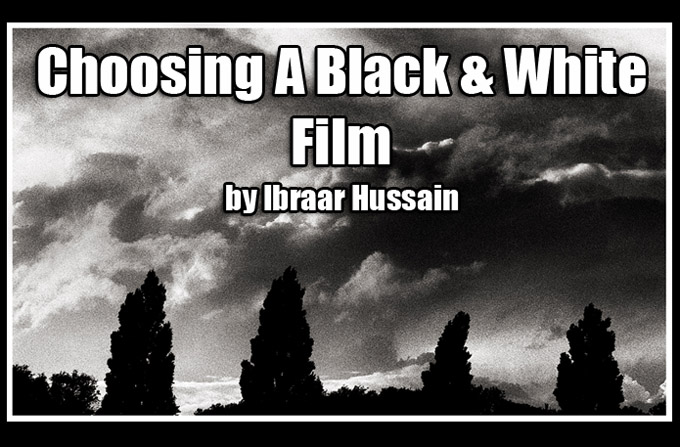
User Report: Choosing and Using a Black & White Film by Ibraar Hussain
With the demise of Kodak Ektachrome things seem to be getting from bad to worse for Film and options for film users seem to be dwindling. A shame, as I adore e100vs and nothing in my opinion can replicate it. But with all the doom and gloom, one thing, which in my belief will always be around, is good old Black and White Film. There are more B&W Film manufacturers than Colour these days, and a decade ago this would’ve been unthinkable.
So many choices are available for the photographer; we have Kodak, Ilford, Efke, Rollei and Agfaphoto to name a few. B&W Film has its own beauty, and each emulsion is very distinctive. Digital photography has progressed and has reached new horizons, but I think it still lacks the feel, look and character of Film.
Many digital photographers have been pushed and have striven for grain free images, their quest for the extermination of Grain has led to, in my opinion, more clinically flat images lacking depth and character. Sure, they’re very high-resolution and have a beautiful range of tones and qualify as B&W fine art, with some being far superior to others, but in the transition I think something has been lost. I’m no master photographer, and most may consider my skills and vision has mediocre at the best, but that’s not why I’m writing.
[ad#Adsense Blog Sq Embed Image]
My aim is to try to demonstrate and show some examples of different film, their individual characteristics, and the use of Filters, which can give a different look and feel. Developer used and developing times also have a large influence, but my Negatives are always developed at manufacturers recommended times and temperature.
The beauty of B&W Film is that the choice of film/ filter/ lens/ developer plays a vital collective role in the creative process. A creative decision is made prior to the shots being taken, i.e. The subject and location matter, of course, but the photographer may decide upon a certain look and feel and for that will choose a certain Film and/or Filter to give them what they’re after. The choice will also be constant – i.e. once the camera has been loaded there’s no turning back! (Unless the camera is a MF with interchangeable backs).
Grain is a thing of beauty, it gives character, detail, and mood, and is used to good effect, and to portray a certain atmosphere or feel. I tend to try different fast films for a different look – Kodak TMNZ 3200, Ilford Delta 3200 and Fuji Neopan 1600 all have their own beauty. Pushing film, say Ilford HP5+ from 400 a couple of stops also heightens grain.
Some photographers may require lots of grain, to give the photograph a gritty reportage like feel, or to give stormy skies a more dramatic and moody look, others may require grain to give their nudes or models a certain effect. And this can be achieved to some extent with artificial grain adding filters and plug-ins, but it’s not the same!
Filters add a lot too. Some people shoot all day every day with a Yellow filter permanently attached. One such Great is Don McCullin – B&W photographer par excellence. His photographs are simply spellbinding, stunning, grim, dark but his vision is on another level entirely. Best known for his War photographs and pictures from Cambodia, Lebanon and Vietnam – his landscapes and documentary photographs are brilliant – utterly!
A few books to look out for are; In England, In Africa, Don McCullin and Open Skies.
Red filters add more contrast and darken blue skies and a light blue filter strengthens skin tones. A really good book to read and which explains a lot about B&W photography is The Art of Black and White Photography by John Garrett. I enjoy experimenting with Film, and my Contax G2 has helped me along in the creative process. The G2, being a rangefinder is superb for B&W. The reason why I say superb is because you don’t view ‘through the lens’, but through a Viewfinder, and attaching Filters – even semi opaque deep red filters doesn’t impede your vision.
The G2 is also quick, has a great meter and the lenses are very contrasty – some may dislike this aspect, others love it. As for myself, I enjoy photographing people – friends, family, people on the street, and travel shots and the G2 is great for this – and I love using fast films with plenty of grain (most of the time)
I’ve included various shots here, with a brief description of the film used and Filter/developer – they’ll give some visual information as to the feel of the different Film/Filters.
My negatives have been scanned with an Epson 4990 into 16bit TIFF. Loaded up into Photoshop, and then I use layers – new later – overlay – 30% (or as required) to use the brush tool to dodge and burn. I also use levels to play with contrast. I’ve also started playing with prints in my darkroom, and when I’m free, the weather is dire, I’m at home and the missus isn’t busting my balls I enjoy playing in the darkroom just as much if not more than going out shooting! There’s heaven and Earth difference between pratting around on Photoshop and in the traditional darkroom – if you have never tried it, give it a go!
I hope photographers can try out some B&W Film, and give developing a go. Developing is easy, as is scanning, and I believe there was an article on Steve’s website not long back about basics of developing Film.
Young lad in a suit. London. 45mm Planar T* Ilford HP5+ pushed 1 stop @ 800 asa.
–
Guy on a boat. Istanbul, Turkey 2008. 45mm Planar T*. Kodak TMZ 3200. Ilfotec ID11.
–
Galata Tower Istanbul, Turkey 2008. 90mm Sonnar T* Kodak TMZ 3200. ID11.
–
Istanbul by the Bosphorus. 45mm Planar T*. Kodak TMZ 3200. ID11.
–
Kids on a Boat. On the Golden Horn, Istanbul, Turkey. 45mm Planar T*. Kodak TMZ 3200. ID11
–
Turkish Market vendor. Istanbul, Turkey. 45mm Planar T*. Kodak TMZ3200. ID11.
–
Amongst the Pillars. In The Hagia Sofia, Istanbul, Turkey. 21mm Biogon T*. Fuji Neopan 1600.
–
Dad watching TV. 45mm Planar T* Ilford HP5 pushed to 1600 asa
–
Mr Ali. London. 45mm Planar T*. Fuji Neopan Acros 100. ID11
–
On The South bank of the Thames. London. 21mm Biogon T*. Fuji Neopan Acros 100. Red 25 Filter. ID11
–
Elvis with shades on. People watching a street performer. South bank, London. 90mm Sonnar T* Fuji Neopan Acros 100. Yellow Filter.
–
Homeless Guy on the Golden Jubilee bridge. Embankment, London. 45mm Planar T*. Fuji Neopan Acros 100. Yellow Filter.
–
Heart on her lapel. Cranford, Middlesex. 45mm Planar T* Ilford Delta 100 pro. Red 25 Filter. From my first roll in the G2 2005.
–
Storm clouds a Brewing. Twickenham, Middlesex. 90mm Sonnar T*. Ilford HP5+ @ 3200 asa. Red 25 Filter.
–
Epping Forest. Essex. 21mm Biogon T*. Ilford SFX 200 with red 25 filter. SFX is a pseudo IR Film.
–
Pashtuns. Mingora, Swat Valley, Pakistan. 2007. 45mm Planar T*. Kodak Tri X 400.

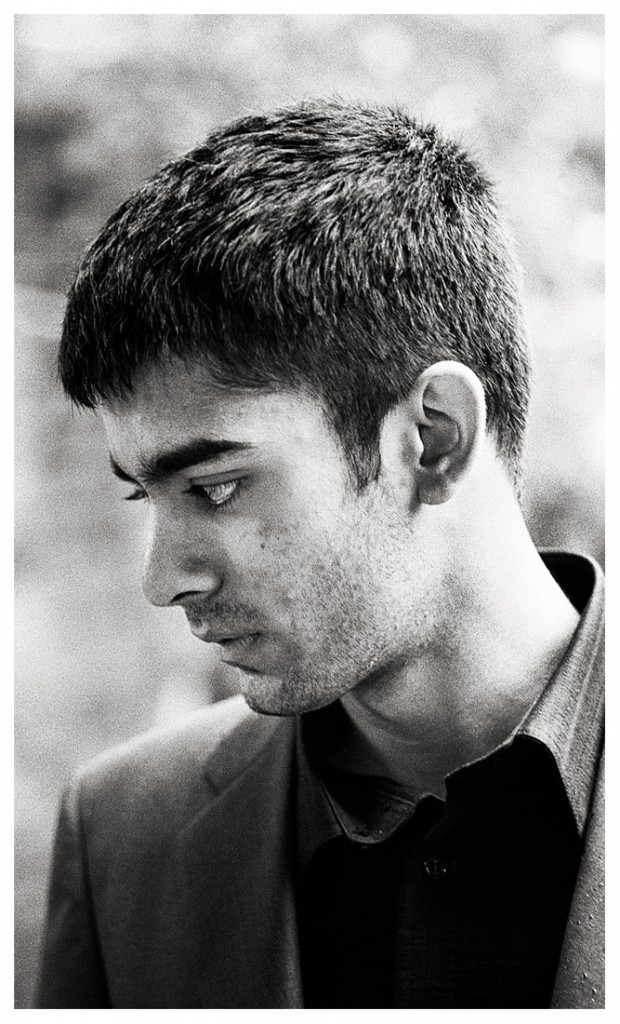
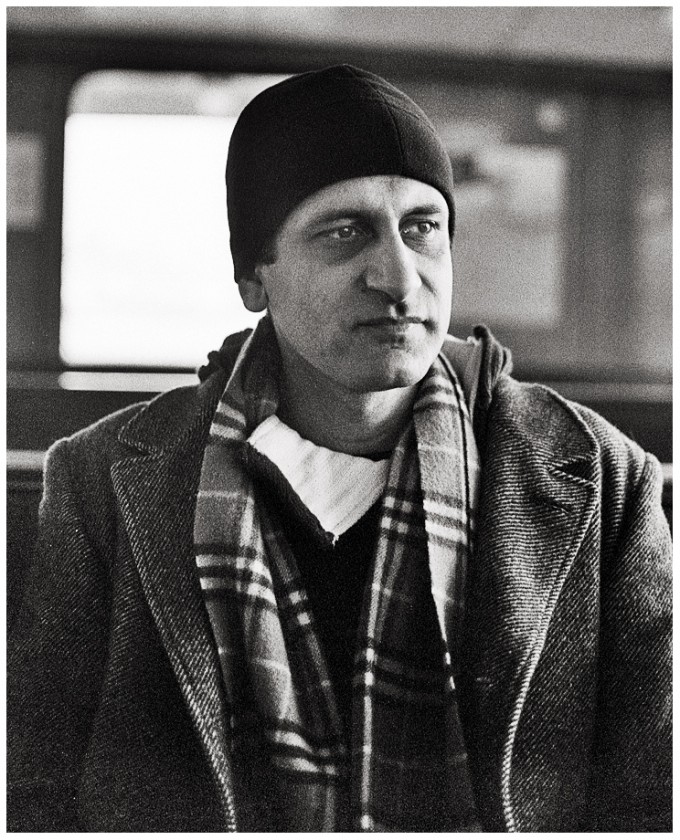
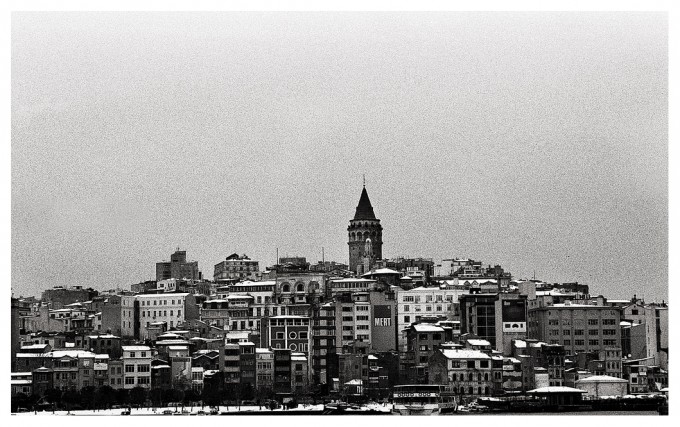
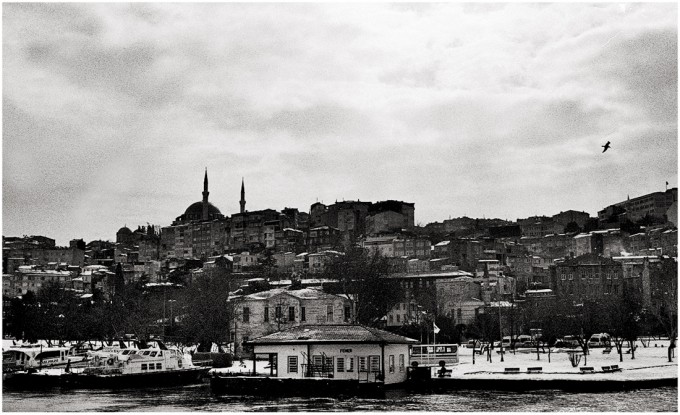
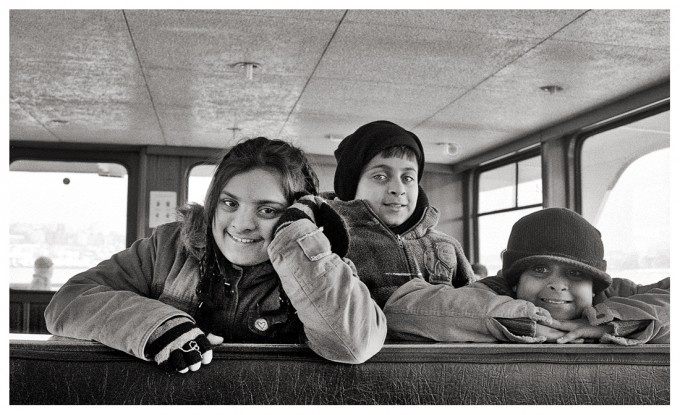
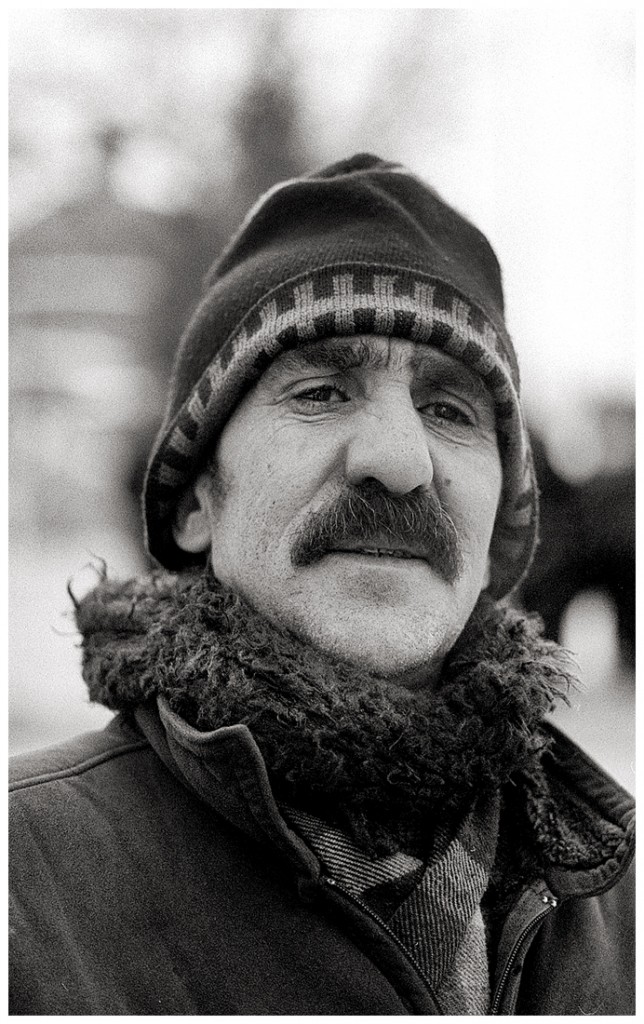
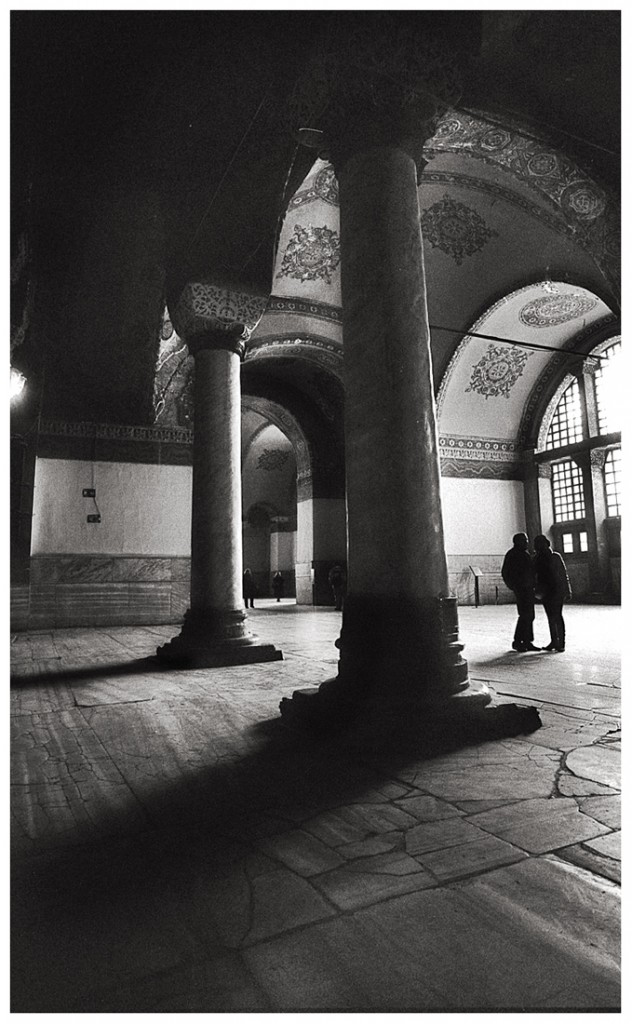
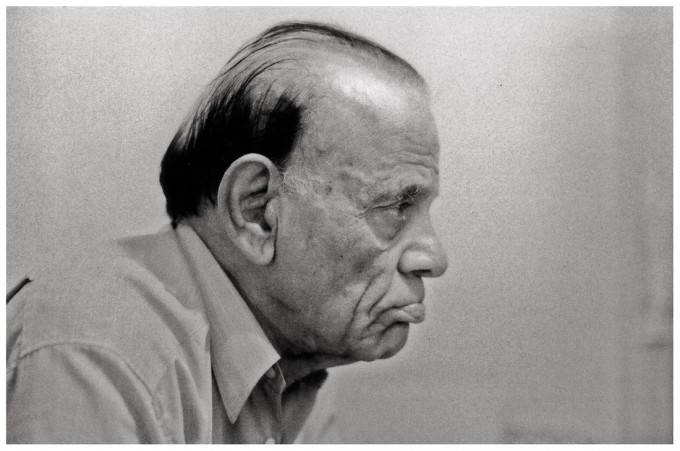
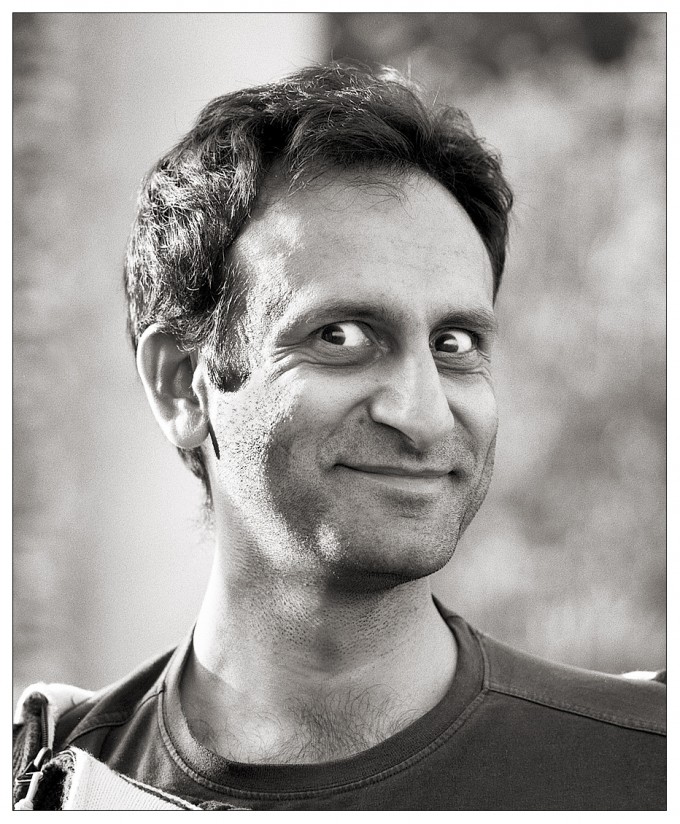
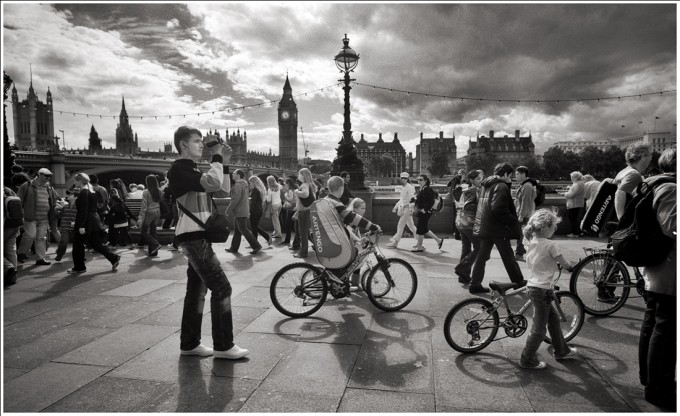
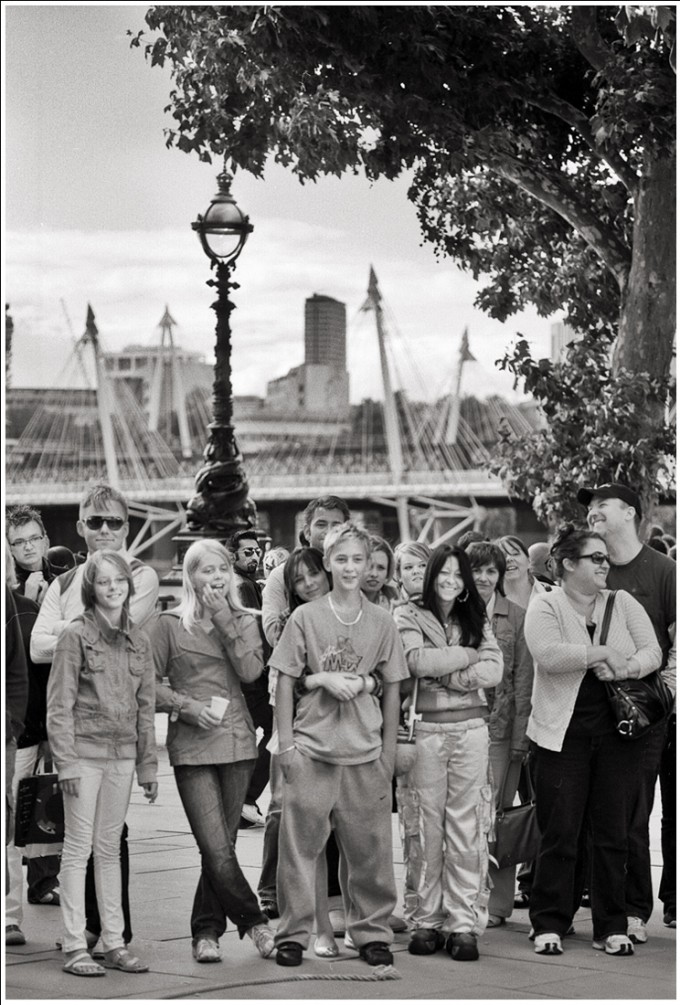
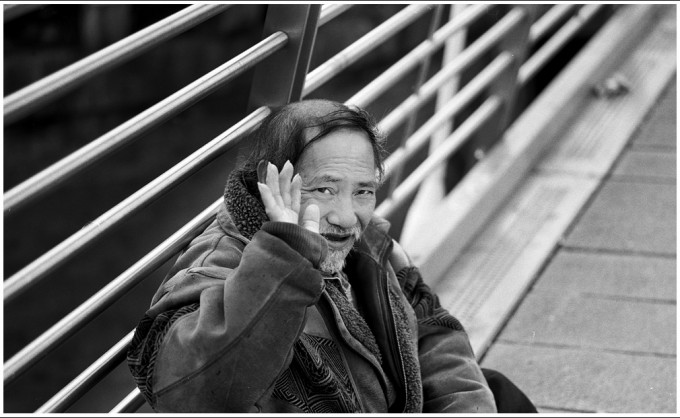
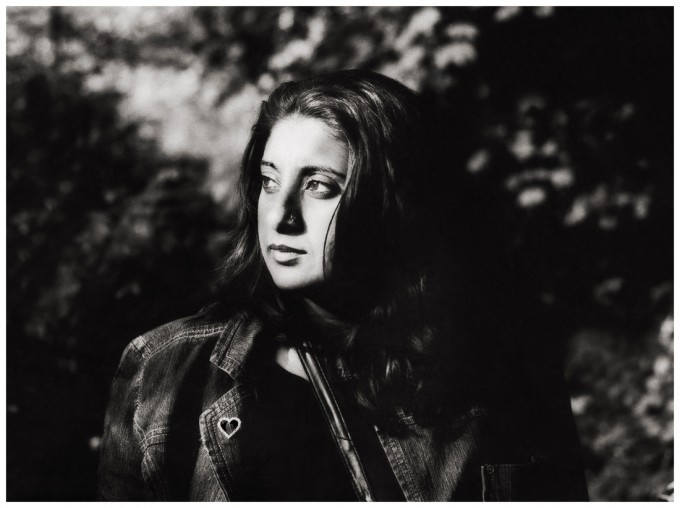
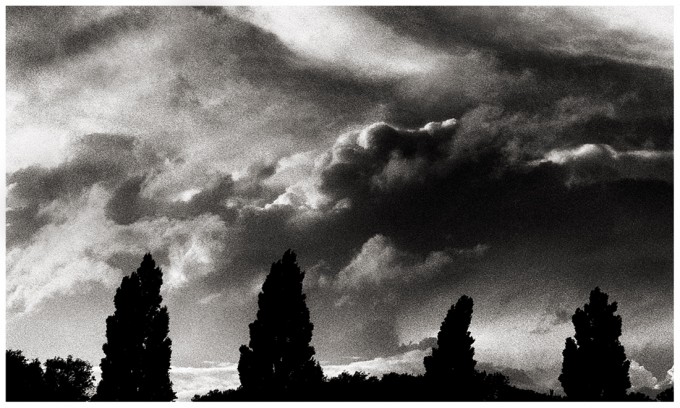
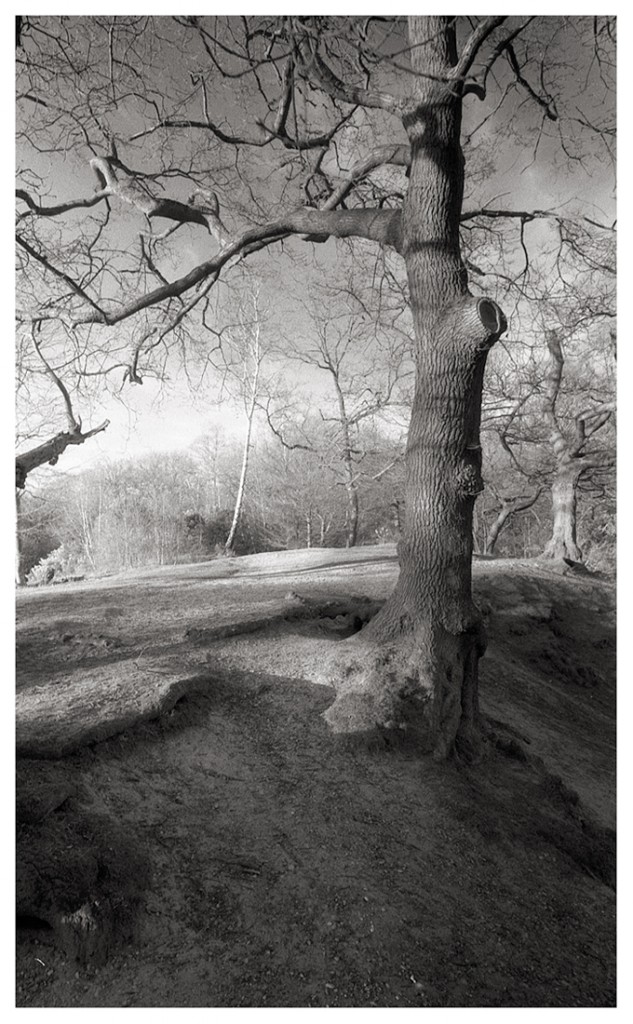
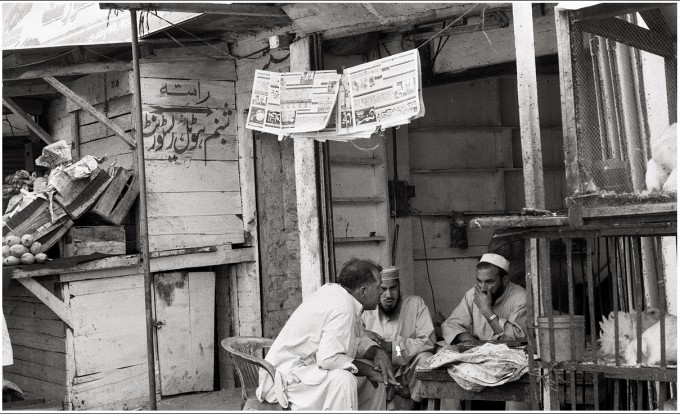


Hello, Ibrar:
Thank you for sharing your thoughts on Film. Indeed, film IS film, and there’s still some about. Having shot film since the early ’50s as an adolescent my orientation is silver-based, though I find digital quite amazing to have a ‘darkroom in a box’ (computer) as well.
I also have the Epson 4990, however I’ve never been able to use it as the only driver software I can find make scanning so slow that a 6×6 would take 45 minutes for just one shot. Can you shed any light on this? thank you
David
Hell’s bells Ibraar! I’ve been devouring your articles here today and I just love your work. I really can’t explain how inspired I feel after looking at all your analog work. You rock!
Hi Ibraar,
Beautiful images.
I wanted to ask (don’t know if I missed it somewhere in all the comments) how you are scanning your negatives? (or are you scanning prints?)
Sorry about the late reply Alan, I used to scan negatives but ever since I’ve been making my own prints I have started to scan prints, though I have drifted away from Online sharing and am now mounting stuff for frieds, family and my own pleasure at home!
I found that one of the rear bayonet-style filters packaged with my Nikkor 16mm 2.8D Fisheye lens is amber, and shot a roll of B&W film with it. I also ordered a yellow filter for this lens through EBay, after no luck with B&H or Amazon. Next, as the budget allows, I will equip another lens with filters. Thanks again, for the article, excellent images, and book recommendations!
Good luck with that Rex, I do think a yellow is essential, to have on all the time, unless you want even more contrast. As it’s only half a stop or even less of light (negligiable in to be honest).
There are so many books available, but let me know what you think of the ones I mentioned!
I’ll be honest, the differences in the different kinds of black and white films are negligible from what I’ve seen. It comes down to the developing more often than not.
I’ve shot Tri-X, APX400, FP4, Plus-X, Rollei Retro 100 and 400, TMAX 100 and 400 and can honestly say that the only rolls that seemed to differ were the t-grain films to the traditional films.
Frank, I’m surprised, as from my experience, and observation, fast films are grainier, slow films are far smoother – compare the FP4 and Acros shots to the Neopan1600 and Tmz3200.
A red or orange filter gives much more contrast – which is also pretty obvious I think.
Of course, I’m talking manufacturers recommended times here. Acros has massive latitude, and isn’t as smooth as FP4+, with Pan F 50 being extremely fine grained and with even more tonality. Tri X and Neopan are very similar – but in a way, you’re quite right too, it may be difficult for a person to explain the difference between say Neopan 400 and Tri X 400 – but I think those with more experience and knowledge are able too.
If you start factoring filters in and comparing apples and oranges (slow film to fast film), then of course you’ll notice a difference. I’m saying there’s very little to differentiate one 400 film from another. Processing has a much more profound impact than the actual film choice – though I suppose the film choice can limit your processing choices
I haven’t tried many different BW Film. I was sticking to Tri-X most of my life until the T-Corn Films were introduced or actually until I got aware of them in the late 80s. After my experience using Tri-X, T-Max 100 and T-Max 400 I would say there is a huge difference let alone between those films. One could say they perfectly overlap each other in a tone separation sense and this is were they really differ. Maybe this is so basic that you all guys who read and write stuff here do not even mention it or maybe I missed that someone already did. But anyhow, for someone who can read tone curves and know how to compare tone curves of different films would exactly know what I mean. I used to love Tri-X — and I still do — because of the fine separation of gray tones between let’s say Zone 0 and Zone V (completely black to middle grey), which normally includes darker skin tones, dependent on how you process the film. After starting to use T-Max 400 which most new papers switched to in the late 80s I was really disappointed until I learned howto use it. T-Max 400 has it’s advantages at the other end. It’s perfect e.g for a wedding photo with a bride dressed in white and different light colors and with light skin type. In that case it didn’t bother me much that the tuxedo or tail coat of the bridegroom just didn’t show any different dark tones at all. After some years I more or less switched completely to T-Max 100 which manages the grey tones let’s say between Zone III to VII well. The dark shade and the light sky didn’t bother me much since I mostly did people and street or morning and evening things.
Enjoyed looking at your images and reading the article, Ibraar. For me, Tri-X has been my favorite b&w film for over three decades. I have admired and even tried other films but have always come back to Tri-X. It just give me what I want. I wish my experience with the G2 had rivaled yours. I loved the lenses but could not get comfortable with the focusing system even after a tuneup was done at the only place in the USA that was still doing them. Now I shoot Tri-X with a Yashica Electro35 GS that belonged to my dad. As far as darkroom, I don’t miss “the smell of fixer in the morning.” As an electronics tech from the 60’s and 70’s, my transition to computers, digital cameras, and Photoshop has been easier than for most.
But I still can’t replace Tri-X!!
I love Tri X, I think it is responsible for some of the most iconic photographs in the world. It does have its own ‘look’ and feel.
I do have a few Yashicas, a 230AF, a FX3, Minister D too. Have you tried the Konica Hexar AF?
I just wanted to thank everyone for the positive and encouraging comments and help.
I wanted to also thank Steve Huff for publishing this and my other articles. been an honour.
I’d like to see Steve shoot more film cameras and a Friday Film again. I never did get to read your Contax T2 report. 😉
I’d like to see more film related articles, (you reading this Max?)
and would friends here object to 1 or 2 other articles I have lined up?
regards
ibbs
Very nice entry and great images! Where I live, black and white film is quite difficult to find and extremely expensive (around 10 USD per roll, if you find it). Therefore, buying cheap and good film has become the main problem in my photography… I love most from films Kodak and Ilford, but I use them only on special occasions…
My favorite cheap films are Fomapan 200 and Ultrafine Extreme 400, both available on 30m bulk rolls.
Both react very well to pushing: Fomapan 200 is excellent from 100 ASA to 800 ASA, Ultrafine Extreme 400 pushes very well up to 3200 ASA with Rodinal, but I find that at 1600 it is a nice alternative to Tri-X and HP5, nicely punchy and with high contrast.
thanks eguevara, I’ve noticed mail order is the best bet here in the UK, and amazon are pretty good value too. there’s another firm who sell cheap film http://www.7dayshop.com. I think they delliver to the usa. have you tried any Rollei films? they’re re released agfa emuksions. has anyone? and thanks for the info and tips!
By the way, “Heart on her Lapel” and “dad watching TV” are scans from darkroom prints rather than negatives.
Ibraar,
Wonderful shots! I am really happy to read your article, view your photos and the rewards of BW film photography. I too shoot BW film and develop at my home. It was also great to see shots from different film, developer and camera combinations. I became a fan of FP4+ from Max, who I met at Steve Huff’s first class in New York. I also like using Neopan Acros for is reciprocity characteristics of only +1/2 at almost 16 minutes. All your photos are wonderful, but the “heart on her lapel” shot really drew me in.
Steve, thank you for posting this wonderful article and set of shots! Also, will we be seeing so film shots from the T/.95 soon? 🙂
Sorry, I guess it was only one camera not different cameras.
thanks joseph. I really want to see more film related stuff. I hope to!
Steve, I think you need to bring back “Film Friday” Despite the death of many types of film, there’s still a passionate fan base for the medium.
I agree!
There are a WEALTH of Film, cameras to be tried and reviewed, from Half Frames like the magnificent Pen and Baby Rolleiflex TLR (Efke and Rollei now make 127 Film!) 35mm SLR’s (both AF and Manual) and RF’s – (I’d love to read and see some reviews of the Konica Hexar AF and Rolleiflex SL35 M) to 645 and 6×6 such as the Rolleiflex 6000 series, SLX, Hasselblad and especially the Rolleiflex TLR’s.
Proper reviews, with photo’s and samples etc to read and marvel at!
Also scanners, when was the last time any one read a decent scanner review?
FRIDAY FILM PLEASE STEVE!!
I meant Rollei 35RF
Scanner reviews (fairly comprehensive): David B. Brooks in ‘Shutterbug’ magazine. The last time I looked, he was VERY much up on the subject and current.
BTW, Ibraar, my personal favorites above: Galata Tower (subject/technique = similar to my interests)… South Bank*… last portrait! Thanks again. And yes, a vote for more, please.
A final note: I love the landscapes of Timothy O. Sullivan and Robert Adams — that clear, open, well-defined “white sky” look of orthochromatic film. Any tips (Anyone?) for going in that direction today via Contax G, medium format, or digital?
Thanks for the information Fred. I had a look at Timothy O’Sullivans classic landscapes, beautiful. I’ve no idea what his technique was but I suspect he exposed for the shadows, and possibly allowed the sky to whiten in the darkroom at times, at other times there’s a lot of texture and detail in the sky – a master printer needless to say!
Both Adams and O Sullivan were master printers, and I reckon thats how they managed their look.
McCullins ‘Open Skies’ also has marvellous landscapes, and again, a master artist and printer.
B&W is very different than colour, (apart from the obvious) in that as far as I have learned and read and seen, the final print (or in the webs case, digital manipulated scan of neg/or actual scan of darkroom final print) is what the goal is rather than an out of camera shot (as in Slide film for example).
check out any of the John Garrett books mentioned above, he explains quite a bit, or the Dark Room Handbook by Robert Langford.
mmm upon closer inspection, o’sullivans seem like lithe prints. definitely a printers technique
Forgive me for forgetting to mention, above, that your images are very, very good!
Thanks for this essay, particularly the recommendations on filters and books. I shoot digital at work, but recently started acquiring Nikon FM3A and F6 film cameras, for shooting during my personal time. The next step will be filters, as I have yet to acquire any filters specifically for film, and your information is quite helpful.
My wife is supportive of my desire to build a darkroom. I learned to develop B&W film at school in the the mid-1970s, and part of reaching my mid-century mark is becoming nostalgic about the interests of my youth. I could not hope to afford an SLR as a young student, but that has now changed. Life is good!
Thanks for the message Rex, I really encourage and urge you to read The Art of Black and White Photography by John Garrett – apart from being brilliant, he has a wealth of easy to follow information on everything bW, if you like that book you can try his other more advanced ones which are equally as good.
http://www.john-garrett.co.uk/home.php
Damn, your portraits are just stunning
cheers ole! 🙂
Way to go Ibraar!
One thing I’ve noticed lately is how much time I spend reading camera reviews. And the last time I was in a bookshop, looking for a good photo magazine, there were dozens, breaking digital photography down into the thinnest slices imaginable. It seems we are spending more time reading, and less time shooting. I think Ibraar may have the right idea. Photography is ‘writing with light’, not reading the hysterical hype about the latest digital camera that has a menu almost nobody can navigate. I kept a film body, and it’s time to go back to ‘writing with light’ instead of ‘fighting with Lightroom’.
As soon as I can set it up, I’ll be back in the darkroom with HP5, ID-11 and The Rolling Stones!
Harry, thanks for the message man, appreciate the fact that I have had some sort of influence, no matter how minute.
I think Film photography is really fun, and is what the art is all about!
For some extra fun, try different film bodies, and try shooting without a meter! haha! that’s tough, but I’m enjoying trying to judge EV values and exposing appropriately
Hi Ibraar… I found your article refreshing and thought provoking…
I’ve been shooting film since when I can remember… I recently took the plunge and applied for a photography course and when I had my interview I spoke of my love of film and showed my portfolio and I was accepted… Whoppee. Whilst my primary reason is to develop in the discipline of digital photography which will open up a whole new world in regards to capture. I believe that film photography still has it’s place and your images are a testimony to this. Best wishes for your future…
Darren
Thanks Darren!
I hope to see yours, as well as everyone else’s photo’s – any links to flickr or similar?
Pleased you gave Don McCullin a mention, Ibraar. I have Open Skies and it is a tour de force. Those earlier experiences certainly carry over to the mood he presents of SW England.
Presently I’m using XP2 with a Voigtlander Perkeo E (Color Skopar 80mm, 6×6), primarily because I’ve become a little lazy on the home processing. But I’ll return to Tri-X (with D-76), fingers crossed, for those luminescent tones.
Still miss Agfa 100 though, with Rodinal.
Don McCullin, man, he’s a genius. Everyone of his photo’s has soul, still life, portraits and landscapes. His Africa portraits are staggeringly brilliant.
Have you read or looked at ‘Souther Frontiers’?
I have always wondered what his darkroom and printing technique is, what film he uses and his technique. (I know he uses Mamiya press and RZ67 and used to use a Nikon F)
Mr Ali is a great subject ! Love the look of the photo, the back cross light is very nice.
I use TMZ3200 and BW400CN (develop in C41, like color neg). Both have their own special look.
Another wonderful variable in BW film photography is format size. Large format, medium format and 35mm all lend a special and different look. Acros in 6×6 and Acros/Tri-X in 35mm my friends
The title image is superb!
Great Work Ibraar!!! I have also compared different B+W negatives in the past, and I suggest you to try Agfa APX as well, it has a thick emulsion and the photos look more 3-dimensional. Ilford by comparison looks less natural. Agfa also shows up much more detail in dark areas of the image. One more thing, Agfa APX is still made in Germany.
Allan, strage you say that, as I’m currently shooting Agfa APX 100 in my Olympus Pen F, and have another few rolls too! (Agfaphoto ones, but they’re real Agfa I hear) Also, I bought myself some Rollei retro 80s – which is another genuine Agfa film (haven’t shot any yet) – Rollei have brought out ALL the classic Agfa emulsions, all manufctured in germany! Check em out!!
Thanks for the info Ibraar, it is just that I did not see you including photos taken with APX100 here, how do you like its quality? Cheers!
Hi Allan, well, I used APX 400 a few years back, but now I’m only 3/4 of the way through the roll of APX 100 – I look forward to the results and will be sure to share them!
I’m fine with shooting film. But why adulterat it by scanning and photosho? If you’re not going to put in the time for “the performance” which is the print, it doesn’t seem worth the effort.
I am going to bet that all these people bleating on about the film look wouldn’t be able to tell the difference onscreen in an A-B random test with well done digital files. It’s the photographic equivalent of the audiophile bias.
Horses for courses nick, i enjoy shooting film and scanning film. And whether i dodge burn or not, each film filter combo is unique
Great job! This is a wonderful post and I’d like to point out to everyone that this site isn’t “Steve Huff Digital Photo” it’s “Steve Huff Photo”….which means game on for all of it as far as I’m concerned. The consumer electronic hype and associated measuring contests involving sensors, pixel peeping to 400% is getting a bit old.
As for the debates about whether it’s pointless to scan negatives, thereby turning film/analog into digital, those who think this are missing the point. When someone makes a painting (whether good or bad) using oils, brushstrokes, pencils etc., and an image is made of it (think of those prints you can buy of Monets for example) it doesn’t make the Monet “digital”. You can see the brushwork…it just doesn’t have the dimensionality of the original, which has a thickness to it. That’s why some people like film…comparisons are pointless because the media are different in so many ways. B/W film is silver halide crystals responding to light, there is a depth to it, and there is also a depth to the subsequent print made in the darkroom. Digital images are mostly shown on computer monitors; I’d wager that the bulk of digital stuff shot now never even makes it to a print or hangs on anyone’s wall…we just share it all via the web, round and round through email, etc.
Although a digital image itself is flat – think of a print made of a Monet or any painting – it does show some of the dimensions and depth and shadows of the original painting (which has texture). This is also true of scanning a negative…the image is digital….but you’ve scanned an image that shows the depth. Get it? This is a depth and texture that a digital original can’t, by design, have at this point. It’s not better or worse….it just is. I scan my negatives out of convenience for sharing, doing some darkroom/lightroom tweaking, etc. And I shoot both a Leica M9 and a Leica MP. I like film cameras not because I’m a retro junkie, or behind the times, but because the cameras are often beautiful instruments, simple and robust. And for people who think ‘darkroom takes too long’, I’d argue that most digital photogs I know spend hours – hours – fiddling with levels etc. in LR or PS.
While others count pixels and argue the nuances of a 23MP sensor vs a 22MP sensor, and ISO 14,000 vs 12,000, I just like to go out and take pictures, whether digital or film. Film is a wonderful way to create lasting images and the results speak for themselves. Why does anyone really care when the pictures, like these, look wonderful?
Brilliant brilliant post Jon, thanks man for airing my views in ways I am unable to! (or rather reluctant to! :)) Most people, I’ve noticed, don’t make many prints, they just snap away like crazy and share on facebook or Flickr. Other serious photographers, hobbyists and amateurs tend to snap away and share on flickr, or admire them on screen. I mean, how many people nowadays evern make prints to put in an album? And most wall mounted prints tend to be in the region of 10×8″ size or so. So all this 38MP resolution of the Nikon D800 is frankly bollocks! Doesn’t mean anything to me, and I’m hardly going to cover my living room wall with a print am I? And as for pro’s, sports and news paper journo’s and papz working to tight schedules need digital, and they need speed, hardly 38MP! But do i need instant results? Hardly! I just enjoy taking photographs, when out and about, when on holiday, or day trips, or exploring the countryside, and I enjoy the feel of different cameras – electronic ones like the G2, or meterless mechanical half frame like the Pen F (which I absolutely adore, it’s perfect in size and feel and beautifully made)
I was saving up to buy myself the new Olympus OMD (I’d still like one) – and back in late january I thought, hold on, why do I want an OMD for? To ‘upgrade’ again like I do with my mobile phone contract every 12 – 18 months? As that’s what people seem to do all the time: Oh, bollocks, the Nikon D200 is obsolete, I’ll get a d300 now, damn, I’ll get a D700, no, wait, D800….etc. Anyway, instead of the OMD I bought a mint Rolleiflex 6008i with 80mm Planar HFT, 50mm Distagon, 120 back and Polaroid back, plus an Olympus Pen F (Mint) with Zuiko f1.8 38mm, plus a nice Barton 1972 strap to go with it (thanks Steve!), another Om2n body and 50mm Zuiko, a Giottos monopod, some filters, a Durst M607 enlarger job lot with EVERYTHING I need for a darkroom, sh1t loads of film, filters etc, , a Yashica 230AF with 50mm, 35-70mm, 60mm makro, 70-210mm , 28-85mm lenses, a new Kaiser lightbox and some other stuff all for LESS than the price of a new OMD plus decent lens! 🙂 And my Missus is FUMING!
Why not, Nick, if you have those tools available? If someone prints in the darkroom and wants to share on the internet, are they not allowed to scan their images? How else are you going to share your photos online if you don’t scan your negatives (or prints), and why not touch them up and optimize them while they’re in your computer? Hell, up until a few years ago all the top advertising photographers were shooting film and their retouchers were using photoshop to edit those images before hitting the magazine stands. Photoshop has been around for nearly 30 years, it has become an important part of the industry, and difficult to avoid.
There are other things about film that I would consider advantages beyond achieving a certain look or whatever, and are great reasons for shooting film for output on the web. First, negatives are a stable and archival medium, no need for multiple copies on several hard drives on and off site. And no need to keep updating those digital media to ensure compatibility when new versions of hardware/software/firmware/whatever become available, just a fireproof and watertight cabinet is all you need.
Second, wide exposure latitude. There is always a chance that exposure errors will happen, despite however experienced a photographer you are. The new Portra films have a very wide latitude, I’ve over-and-underexposed +/- 2 stops on a single roll and everything has turned out great. Something that just wouldn’t happen with digital. I should note that the over and underexposure were intentional, and used as a tool for different lighting situations and DOF control. Scanning and editing these images are an important step, especially for web use.
Third, format. Unless you have really really deep pockets, you are limited to 35mm (or smaller) digital cameras. Medium and large format film is far more accessible for the average photographer now, and the benefits (i.e. the huge increase in resolution, the DOF effects, better lenses, et al.) are definitely worth the investment. Even a mediocre scan of 120 film at medium resolution settings will give a far more detailed file than the average consumer DSLR. There is a valid argument for newer “super resolution” DSLRs in this regard, but then there is 4×5, or even 8×10…
Fourth, the issues of noise, hot/dead pixles, and battery drain are non existent with film. Personally, I switched back to film because I do long exposure landscapes, exposures that sometimes reach into the tens of minutes. With digital, things were just getting to a breaking point whenever I’d do an exposure over about 5 minutes. The noise and hot pixels were just too much, even with in-camera dark frame noise reduction. The combination of noise, the extra time the noise reduction needed, the demands on the battery charge were all enough to convince me back to film. A personal anecdote, yes, but I see many others online who have chosen the same route for the same reasons.
Having said all that, however, I still use and love my digital cameras. I just don’t think it’s productive, or even valid, to discount the use of film for web use just because of an elitist notion of “adulterating film” by editing with photoshop. Pros have done it for years and it has finally come along far enough that we all have access to those tools, why not exploit such a powerful workflow?
Great post Rob and you hit upon so many crucial points. the most crucial i think is the fact that Film can be archived, Not long back some bloke found aset of Ansel adams negatives in an old suitcase or chest of drawers or something – now, if in say 50 years time some geeza found a CD Rom or an SD card in a chest of drawers from 2012 what would he do? Most likely bin the lot!
I think Film is more precious, as it’s ‘real’ rather than lines of code in a computer program.
Absolutely, I like having an object to hold in my hands after going through all the “trouble” to make the photo. Looking at 120 slides on a light table is something special. And I once held in my hands an 8×10 negative and its contact print and the detail was awe inspiring – enough to make any 30MP digital gizmo feel inadequate.
Good article and nice images Ibraar. I’ve noticed the first image is on HP5 “pushed” to 800 and, just for posterity, I wanted to point something out to prospective users, and which is sometimes a source of confusion. The term “pushed” is a bit deceiving because film cannot be pushed much, if at all, unless using a speed increasing developer like Diafine, which increases speed but at a cost. With developers like XTOL or Ilford DDX, one can get very close to rated speed or slightly more but, every time we set a meter to 800 for a 400 speed film, and develop accordingly, we essentially under-expose and overdevelop to create contrast, with shadows ending up deeper in the toe of the film’s inherent curve. That is one of the reasons why on overcast flat days, many rate film at box speed, or over, and overdevelop, to create contrast. Subsequently, on bright sunny days, we rate film below box speed and under-develop, to lower contrast and get better shadow detail. Of course, it’s all about the look one wants to achieve so one can expose and develop without following any of these rules, but, in the end, we are just manipulating film curves and not really making film much faster than rated by the manufacturer.
Thanks Max, very informative and enlightening information which I’ve always overlooked, thanks!
I suppose I push film for the effect it gives me rather than for any other reason. i understand many push film so that it enables them to shoot without any camera shake for a given subject
Hi Ibraar..yes, and that’s perfectly fine 🙂 Using the tools available to achieve whatever vision, is what photography is about. Personally, when I need more speed, I use Kodak TMZ, which at its native speed of 800-1000 is just about fabulous, or Delta3200, also at 1250-1600. Neither one is a true 3200 speed by any stretch, but they do push well.
If you ever want to have some fun, shoot some Acros rated at 400 and develop in XTOL 1:2 for 13 minutes, with one minute agitation at the beginning, and 5 inversions every 3 minutes. Great stuff for portraits and bolder images.
Max, thanks again, I’ve learnt a LOT from your two posts!
So Kodak TMZ @ 800 – 1000 asa? Ok, so on the G2 or OM body I change the asa to eg 800, but do I develop (using massive dev chart) for 3200 or the asa I rated it at?
And what’s the native speed of Neopan 1600?
how will Tmz 3200 @ 800 ‘look’ (compared to my 3200@3200 for example?)
and finally, I started using Ilfotec DDX when I first started off (Ilfords site is brilliant for the beginner and they recommend DDX) then I started using ID11 (I still have a LOT of stock solution but it’s over 3 years old) and was very happy with it, but I was curious so I acquired some Rodinal, and truth be told I love it! So easy to mix (as easy as DDX) yet lasts much longer and negatives come out crisp! (so far I’ve tried it with Acros 100 on the Oly Pen F and Tri X 400 on the Rolleiflex)
I’ve got myself some Agfa APX 100 and Rollei retro 80s (shooting the APX in my Oly Pen F) so look forward to the results with Rodinal.
I will give your XTOL a go once I get myself some! 🙂 Thanks for that – any experience with Rodinal??
Ibraar,
You are very welcome! Any help I can give to a fellow film user is my pleasure. TMZ…yes, set your camera (or meter) to 800-1000 but DO NOT develop per Massive Dev Chart or higher ISO. TMZ does not like that. Delta 3200 does. For TMZ @ 800 follow this closely and you will be a happy camper. Use TMAX developer if at all possible. 75 degrees, 7.5 minutes, with 5 inversions at beginning and 3 every 30 seconds. TMZ does not like overdevelopment for a given ISO and it is also fairly sensitive to temperature fluctuations so use a water bath to keep the tank in, if you can. Not a must but if it is important stuff then it’s worth it.
Rodinal…you’re talking to a die hard fan and have used it for years. For APX100 it is a match made in heaven. Having said that, if you go by internet legends or especially AGFA’s literature, you will only get frustrated. If you send me an email (you can go on my website if you click on my name), I will send you material that will make your Rodinal + APX100 experience a very pleasant and rewarding one.
Speak soon..
Max
max you’re a gentleman and a scholar. thanks ever so much for the advice, I’ll be sure to try it out. I’ll drop you an email too. and mate, your website and art is brilliant, top notch class, I’ll be sure to be a regular viewer!
Wow. Great series. Will take a closer look in the weekend.
Never gone above ISO 1600 on film, but your samples are very good.
Cheers Anders, thanks so much for ALL your positive comments my friend! (on all my posts)
What do you think of Neopan 1600? the grain is very fine on that compared to the Kodak TMZ3200
It is me that thank you for all your beautiful posts 🙂
The Neopan is special and very dream like with a nice soft contrast and after looking at it several times I actually like at lot. (had to get a little used to it as I’m usually going for more contrast like those taken with the Ilford).
Awesome pics !
I’ve been shooting mostly Acros 100 in an M2 this year. For landscapey stuff, a Fuji GW690, also with Acros. Why? It’s irrational, I suppose. I also have a D90 and an X100. This will irritate all the “rational” people who will say that I can do the same thing with Silver EFX (which I own). But, “rational” people usually take crappy photographs. Have you noticed that? Yes, film is more difficult, but drawing with a pencil is even slower and more difficult, and people still do that.
NL, well put!
I do like Acros 100 though, it has such great latitude. Have you tried Ilford FP4+? it’s very very smooth and silky!
Great pictures, and very informative reading. My Dad gave me an old Agfa Clack a few weeks ago, which he dug up from the attic, together with a “fresh” (1961!!) roll of Agfa Isopan F film. Like with a good wine I keep it for a special occasion, and then carefully shoot my 8 frames.
In the meantime I enjoy the noise/grain from my M9 set to B&W at 2500 ISO, which for a digital camera is pretty film like.
man, I look forward to seeing your results from the Clack – that’s a proper vintage piece!
Clack! Great name! 🙂
I think what highlights the difference between the characteristics of film and digital are the terms “grain” and “noise”. Grain is such a positive word and brings life to the photos the same way grain provides life to plants (that might be a stretch, but I’m going with it). Noise is a negative word and describes an unwanted characteristic. It’s interesting how two words with somewhat opposite meanings are used to describe the same thing in photography.
I disagree, in a film photo, the grain *is* the image. The shape, size, structure, and arrangement of the silver halide particles is what determines the characteristic of the image to be formed. Modern “t-grain” films (Neopan, T-Max, Delta) have finer, tighter grain characteristics compared to “classic” films such as Tri-X and HP-5.
As you push or pull the the film by under or overexposing, you’re teasing an image out of a limited band of its normal dynamic range, leading to more pronounced grain characteristics. So in this way, grain is both constant (depending on the type of film) and variable (depending on the exposure).
Noise, however, is just that: noise. Noise is random. It’s comprised of errant electrical signals, and by increasing the sensitivity (“pushing the sensor,” if you will), the random signals will be accordingly amplified. It is interference, in a way, and not a part of the signal.
Interesting, grain is the film though, rightly said. But I understand where Rob is coming from, noise is an unwanted by product which is almost always disliked (apart from some folks who like the look of a digital cameras noise as it resembles fast film grain), whereas grain has a positive sort of connotation, like distinctive brush strokes from an artists hand
Thanks so much atmosphere and texture excellent
thanks man, appreciate it.
A timely post, Ibraar — you may recall from my earlier comments here that I’m a new Contax G owner. Fine photos, as always! I’ve always wanted to do B&W work, but never really did much due to the limitations of 35mm roll film while attempting to achieve technical standards associated with the use of some suitable variation on a “zone system”. Having been out of photography for 18+ years, I’d appreciate what advice you can offer regarding effective dynamic range expansion with a “hybrid” technique of shooting 35mm film and exploiting the advantages of Photoshop/Lightroom (et.al.) digital processing.
For example, one COULD carry two G1 bodies (given the low cost of these bodies in today’s secondary market) — just think of ’em as 35mm “film backs” — and pretty easily realize complementary chemical processing for each of two (or more) shots of the “same” static subject. Could you not also bracket shots, and then go do a sort of ‘HDR’ thing in the computer? Today’s ultralight tripods would appear to be part of a “game change” in this scheme, as well. It’s early times for me at this point, so I don’t really know what kind of processing tools may be available to help achieve this vision. But think landscape, “rustic” architectural, and similar ‘fine art” subjects for which zone system variants of a quarter century ago were most appropriate.
So my plan is now OM-D/E-R5 (having just been fairly wowed by Robin Wong’s 2-day (!) ‘real world’ test results recently posted online), complemented by Contax G1/G2. BTW — does ANYONE have some clue yet how that Contax T Biogon 28mm (modified) lens might marry up with the new 16mp sensor of the OM-D in manual mode with adapter (I just picked up the Kipon on eBay VERY cheap)?! I’m assuming the 90mm Sonnar will work just fine. Thanks, Ibraar, for the assistance — and for the inspiration! Others here, I’m sure, may have some thoughts on this, too.
Hi mate, id have to reply to you properly (along with everyone else) when i get home later. But negative has such a huge latitude, with using a graduated filter is there any point of wanting more dr? If u look at the latitude of the picture above of the people on the south bank shot with fuji acros you’ll see my point, it has great latitude almost hdr like
I can only that say Ansel Adams thought he needed zone system [THE Zone System!] dynamic range expansion with a particularly gargantuan 8 x 10 view camera (if I’m remembering correctly: I can see the thing mounted on the roof of his vehicle in my mind’s eye)! Well, I’ll just hang in for later… though I might mention that I did have the opportunity to see an extensive exhibition of his prints in New York back in the mid-seventies: Whew! Forget about “reproductions”, believe me! Also forget about “critics” who are too cool to like Adams. C’mon now… As I recall, they had gallery prints for sale for… [a little brain fog on this…] either $300… or $190! I, of course, was too young and too poor to “invest” — Ha, ha… ain’t that life?
I’m home!!
Ahh! Nothing quite like a proper keyboard!
What I understand about the zone system is that one has to – for a proper Black and White picture, have a range of tones from 0 to 10 with 0 being deep black, 10 being white and 5 being midtone grey (what i think light meters in cameras adjust for) I try to get all zones from 0 to 10 in my pictures, with shades of grey in between.
If you notice, many photographers shooting BW haven’t an idea about the range of tones, or ignore the rule being voiced here, and instead rely on histogrammes – and these sometimes render a scene a bit too ‘grey’ – as they’re too mid tone heavy and light on zones 0 and X, also light on zone II and VIII (which are very important in the Adams view).
35mm is more than adequate to project the 11 zones and has been done beautifully by countless photographers. Of course, 120 film will give you more gradual tonality but I’m afraid hobbyists and laymen like me aren’t qualified to elaborate on the subject any more. I reckon “the Negative” by Adams is an essential read though.
You could try the two bodies, and then combine the differently processed images, truth be told, what youre talking about is all new to me and sounds fascinating and I do wonder if such a thing has been tried before? It’s interesting, I do wonder how, for example, two identical shots – 1 shot in Tmax 3200 and the other in say Ilford Pan F would combine in a hybrid exposure?
Another option, as you said, is bracketing, say, one exposed for the highlights, the other for the shadows, and finally I once came across a photographer on the Contax G site who was shooting skylines of Singapore with Velvia film which he has used a double exposure on, the first shot he metered for the lights, the second was exposed on top of the first and was exposed for the shadows – and the result was striking and really good!
I don’t think the 28mm Biogon can be mounted on a M4/3 camera can it? I used to have a Lumix GH1 which I mounted some OM lenses on, but the Biogon G was a no no as the flange distance was a bit large – the arse of the lens stuck out too much – but correct me if I’m wrong!!
Nice hearing from you, Ibraar. I follow your overview comments and generally agree: I think I have some interesting research ahead of me. I had much more of this fresh in my mind 25+ years ago, but it’s the kind of thing that snaps right back into focus on review. I can say that I don’t care much for the grey look you mention — avoiding that would be a priority for me.
As for my proposals, they are, for now, pretty much conjectures I’m tossing off the top of my head (though not without serious intent and some forethought). At least you didn’t rain on that parade with what you know. I’d still invite others here to just go ahead and do so if that’s the way it is — better to get a heads-up sooner than later. Still, these ideas just seem like logical extensions of what’s conventionally done now. I don’t mind working slow on the picture snapping end of things. I’d have to feel skeptically cautious about “mixing” film types; but a complement of development times — particularly adjusting for conditions, as suggested elsewhere here — and the combining of images in, say, Lightroom (or ?) seems straightforward in principle. The bracketing example you cited is encouraging. Thanks for the advice!
As for using the Zeiss/Kyocera G system 28mm Biogon with MFT bodies, Ibraar, I Googled “Contax G Biogon + micro four thirds” and quickly confirmed what my brief previous research suggested. Right off, there’s a video showing the hook-up procedure of the Kipon V.2 (or V.3) Contax G-to-MFT adapter, which I now have, with the Zeiss glass… plus other videos showing the Metabones and Shogun adapters. The latter two may be preferable to the Version 2 or 3 Kipon overall, but some forum surfing earlier suggested that there’s some variation in how smoothly individual samples of these adapters may work with your own set of lenses. It’s kind of hard to generalize, unless current production comes with improved consistency.
A short way down the listings you can find a link to ‘flickr’, where ‘Jackslai’ shows you the results of using the 28mm Biogon with an Olympus E-PL1 body… and well, THAT certainly does seem to work! The gallery of shots isn’t really the best for directly confirming the technical performance of this combo right out to the corners of the frame in an exacting way; but look through them, and I think you’ll agree that the point is made. There’s some confusion out there about compatibility with the adapters. However, it seems clear enough to me at this point that rear lens element of the Biogons (the 21mm, too) is not the issue — it’s the plastic guard tabs which extend too far… and people just saw a bit of them off, basically. You can see the whole procedure, step-by-step, on video. My 28mm Biogon has already had this neatly done. You just don’t want to drop a modified lens!
So all seems to be well with that 12.3mp Olympus sensor; others have apparently had similar success with Panasonic GF’s. There DOES seem to be a problem adapting the 28mm ZM version of the Zeiss Biogon; Leica Elmarit was mentioned as a poor match as well. It’s a question of how a given sensor’s design and physical characteristics accept the projected image from 35mm rangefinder lenses toward the edges of the frame. This is why I made the inquiry regarding the new 16mp Olympus sensor: this will be a trial and error thing, it seems. I don’t have much so far in terms of hypotheses or theories which would allow one to make a fairly confident prediction of compatibility in advance; but maybe someone here has some clue about this. I’ll try to get some speculation out of Olympus by phone in the next few days. That 16mp sensor, BTW, is NOT the same as that which Panasonic is using, according to Olympus — some had speculated earlier that it would turn out that way, and I’m personally excited to see what looks like another class of performance coming from the 16mp Olympus system.
What I’d REALLY like to see [Steve?] is a comparison of the Panasonic-Leica 25mm f.1.4 and the adapted 28mm Biogon in a short apples-to-apples MFT performance contest. Sure, I realize the MFT lens is really a very different thing in several respects… BUT, many will already own the 20mm Panasonic MFT lens, as I do, and are wondering if it’s worth it to get the much pricier Panasonic-Leica as well; or sell the 20mm and lose the “pancake” pocket-packing advantage. The Biogon naturally does double duty at two focal lengths, even with the cheap to acquire G1 body, and your investment there will likely hold its value solidly for the foreseeable future with enough takers when and if you want to sell. Note as a cautionary example, that the 14mm Panasonic MFT lens is now available new on eBay from overseas at $166 and change. A similar percentage coming off the 25mm f.1.4 wouldn’t be small change if you’re concerned about your “equity” in lenses. I’ll interject here that the 90mm Sonnar seems like a particularly useful MFT fit: an effective 180mm lightweight prime at f.2.8 (nice fit with the 45mm f.1.8 Olympus). And that’s the “going both ways” wrap-up!
Fred, thanks for the post and comments. A lot to take in there! I do look forward to seeing some Biogon 28 or 21 shots taken with a M4/3 camera. That’ll be 56mm I think? Just curious, is it really worth the hassle? I mean surely the dedicated M4/3 lenses will give better results as they’re computerised and ‘talk’ to the body allowing for more iq increase?
I tried my OM Zuiki 28mm f2.8 with the GH1 body and was not happy with the results I must admit, so much so that I jacked in the system and sold it. I actually bought it for video and film making rather than stills, but I was so disappointed with the results I sold it on a knee jerk. I regret that now but que sera sera.
How are you getting on with the G1?
Well, Ibraar, I think adapting old SLR lenses is an ENTIRELY different kettle of fish. No, in that case, I DON’T think it would be worth it — except for the sake of necessary economies young, but ambitious, (student?) photographers might have to live with for awhile. Personally, I did not care much for the Zuiko 24mm f.2.8 lens, even used with the OM-1 back in the ’80’s, Ibraar! Toward the edges of the frame, results were not pretty in the landscape and “picturesque” architecture photography I used to enjoy doing.
I used to borrow the “boss'” OM-1 whenever I needed to carry the 24mm focal length — I didn’t have the Nikkor AI-S 24mm (a little pricey for a young guy back then). HE borrowed my Nikon F2a whenever he needed to be able to focus in very flat light — that OM finder was bright, but relatively poor when it came to serving up enough contrast for the boss to photograph indoor swim meets. Of course, then he wanted to borrow the Nikon stuff all the time! Just sayin’.
I figure I made a rather implicit argument in my last paragraph above regarding the “worth it” question. Keep in mind that I, like others, have enjoyed shooting the kind of subjects for which technical quality is typically a critical matter, if exhibition is the goal. And the kind where working deliberately in decent weather is rarely an impediment. In THAT context, I think it can be worth it. If you go follow the lens adapter leads served up by Google, you’ll see a LOT of this going on in the “mirrorless” kits of lens enthusiasts. I mean, some pretty wild stuff, too. Somebody’s having fun — and hopefully, getting some great results somewhere among the inevitable “epic fails”!
I’d just suggest this, speaking for myself: If I keep the Panasonic 20mm for its practical virtues, and buy the 25mm f.1.4 Pana.-Leica for the technical excellence and “mojo” Steve cited as a notable and exciting gain over the 20mm… I betcha this option ends up costing me SIGNIFICANTLY more in net cost 5 years down the road [who knows what will be the must-have, then?] than putting the 28mm Biogon to work for the type of photography I described. I was never crazy about 50mm as a “standard” focal length anyway — I hardly used a Nikkor AI-S 50mm f.1.4 that came with my previously studio pro owned F2a; I carried the 35mm f.2.0. I shot a LOT with a 40mm Triotar on a Rollei B35 when I was college age, though.
So I’d LIKE to think the Biogon will get me that ineffable mojo thing if I again end up doing work like Steve’s rustic buildings series, viewable here. And I get the great Biogon virtues at 28mm on film to boot! A fine 2-body solution with the Olympus, methinks. If the new Micro 4/3 thing leads to my creating a very different kind of portfolio, then all bets are off on this adapted “56mm” complement being worth it. And don’t forget that 90mm Sonnar: great, I’m expecting, adapted — I used to, by necessity, shoot my 200mm non-AI’ed prime lens in stop-down metering mode. Didn’t bother me. This way, I get away with owning the relatively bulky, faster Zuiko E-series 4/3’s 40-150mm f.3.5/4.5 ‘zoom’ at $82 from eBay, and STILL have a compact, lightweight effectively 90mm + 180mm (f.2.8!) telephoto complement (with the Olympus 45mm f.1.8) for more critical work or a “traveling” kit. And now, the cost of the two adapters is justified, as well. Make a little more sense, now? I simply hope my specific example might spark some useful creative thought in others here.
Of course, you also have to note, Ibraar, that it was the digital m4/3 system and its flexibility, that — via this strategic path — pushed me back into film! I wouldn’t own the Contax otherwise. Some small irony, perhaps. You gotta like that!
Oh yes, the G1… Well, I guess we’re at the “Um, hi… I’m Fred… so you’re G1?” stage: I haven’t delved into the G1 manual yet — I’ve been too distracted acquiring photographic bits! I know…
thanks for the reply fred. lot to digest! and interesting observations. well, I’d love to see how you fare with the lenses and ideas. thanks again
Er, yep… I got a bit wordy. BUT… to reiterate THE point for relevance within this post on B&W film photography: ICL film RANGEFINDER system + compatible m4/3, NEX, or similar “mirrorless” Digital system + full employment of all the available ‘tools’ (and requisite adapters) = Maximum ARTISTIC flexibility; High bang-for-the-buck (value for money, as they say in the U.K.); High retained value = Worth it! Maybe the only way doing 35mm B&W photography might still look attractive for some, alas…
I thought with the contax G biogon 28, to adapt it to m4/3, you’d have to shave the legs off he back?
I don’t see the point of shooting with film if all you’re going to do is digitally scan the negatives anyway. You’re still going to wind up with a digital image. If it can be accurately converted to digital, it can be photographed digitally. Grain and tonal curves can be recreated digitally. I see nothing in any of these photographs that couldn’t be done in with a digital camera and Photoshop.
I don’t see the point of shooting film if you’re not adjusting the development time and scanning them in with a flatbed and playing around in Photoshop. Might be better quality if just shot digitally.
You might as well ask why anybody would continue to play the piano or drums in 2012, since it’s easier to just use a synthesizer that can convincingly simulate these instruments. After all, you’re going to be playing it back digitally anyway as an MP3, right?
And yet musicians continue to play the piano, even when they have a synthesizer in the studio. The reason is that some musicians like playing real instruments. Some photographers like shooting film cameras and working with the real thing instead of a simulation. If you don’t, fine. As you say, you can always fake it in photoshop.
If you want a piano, play a piano. If you want the look of Tri-X, shoot Tri-X.
hear hear!
Doug and doc i look forward to seeing your examples. I hear you can use the watercolour filter in photoshop instead of actually painting, wow! Lets all have a go! Abd if i didnt scan i wouldnt be able to upload here on the net abd wouldnt be privileged to read your sincere comments. Oh dear
•and, not abd. Damn touchscreen phones!
I’m fine with shooting film. But why adulterat it by scanning and photosho? If you’re not going to put in the time for “the performance” which is the print, it doesn’t seem worth the effort.
I am going to bet that all these people bleating on about the film look wouldn’t be able to tell the difference onscreen in an A-B random test with well done digital files. It’s the photographic equivalent of the audiophile bias.
if u care to read my post again my friend youll notice i enjoy making darkroom prints and if u wish i will post some scans soon. Film is a beautiful thing, it can be printed projected scanned touched smelt and fealt. totally versatile and with its own look and feel
Again, that’s like saying someone who plays an analog instrument like a guitar can’t put it through a synthesizer or a digital processor. It’s a completely arbitrary rule.
Photographers, like musicians, have an unprecedented number of tools that they can use to create any given image. Some of those tools are analog and some are digital, and there’s no reason to mix and match them in a hybrid workflow. It’s perfectly legitimate to shoot film and then post-process digitally (most movies are now made this way, BTW). Artists like Radiohead record analog instruments and put them through digital processors all the time. Why shouldn’t photographers do the same thing?
If a photographer like Ibraar chooses to shoot film simply because he likes the tactile feedback he gets from his film cameras, that’s reason enough to shoot film. Most musicians have a similar relationship with their instruments. As Brian Eno once said, “a synthesizer can be made to sound like anything. A Stratocaster only sounds like itself — but it does that better than anything else in the world.” Just because you can fake something doesn’t make the real thing illegitimate.
David, man, you’ve put it most eloquently, succinctly and truthfully.
Film is Film, people think there’s no point shooting it as you can recreate the look using computers, sure, course you can – to a point. But as you said, it’s not film, it’s not the real thing.
And as you have also pointed out, Movies shot on 16 or 35mm are post processed digitally. Here on the Internet it makes sense to process digitally – but for my own pleasure and use, I’ll process it traditionally, though ink jet printing has come a long way and I don’t see why people shouldn’t print BW using ink jets – in fact I have about 5 ink jet prints of mine which my friend kindly did for me, mounted in my hallway.
Some people, I think, didn’t read my post carefully, all I’m doing is demonstrating the look, feel and use of Film, and it’s fun and creative, using a creative process and way of thinking different from a pure digital work flow.
Well said, David. I paint with oils and I digitallize my paintings very often. Maybe I could replicate them digitally, but the base, the first product is oil on canvas or paper. The same with b&w. I shoot with my Ricoh and get wonderful digital b&w jpg files, but I also shoot with my M3 and collapsible cron and love the prints. I could print some Ricoh’s files, I could digitalize some M3 prints, but base products and experiences are all uniques.
+1 and you brought Brian Eno into the thread 🙂
I use 35mm Ilford 100 and Ilford Pan F 50 black and white film. I experiment with different b&w filters. I use a Leica M6 TTL or an M7 camera. Sometimes I develop the film myself and sometimes I send it out to a top notch outfit for developing and very high resolution scanning. I don’t edit my images with Photoshop or any other software. If I need software to make my photos excel, I don’t want them. I’m a photographer, not a computer jockey. I often blow up my 35mm shots to as big as 16 x 24. All my prints are made by Adorama, New York. They make great prints. You can shoot digital till you’re and old man, but nothing you can do can compare to my film black and white shots. Film has a different look, different contrast, different texture than may be simulated by digital technique, but images just won’t look the same. I got rid of most of my digital cameras. I use digital to shoot family photos. When I want works of art, I use my Leica cameras, lenses and black and white film…..the slower the better. Don’t like Tri-X anymore. Try slow Ilford b&w film. You won’t be disappointed.
cheers Jose, Rick, nothing like BW. I do LOVE Ilford Pan F too! Slow 50 asa and smooth! Though FP4+ is also a star
I really cannot help but absolutely agree with your remark. Honestly I also feel the same.
I belong to the old school of photography when everything (mostly everything) has to be decided before clicking.
Now there is Photoshop, but then it should be only left to removing minor errants rather than recreating something entirely different to what was originally seen or perceived.
I enjoy taking photographs with film and have lately started with black and white as well with Holga 400!
@dough. You can’t recreate film look with digital. Simply not possible. Have tried all the smart tools, but the results are nowhere near real film. And I mean not even close to real film.
Andres, I agree. For every 100 pictures recreated to mimic 35mm B&W Film, you’ll probably find one if you’re lucky which could pass for a film shot.
Tri X is simply Tri X, if you look at the Fuji Neopan shot by the Pillars in the mosque above, you’ll see that the grain has an almost graphite pencil like feel to it. The TMZ 3200 is gritty and sharp, the FP4+ is smooth and clean and the Neopan Acros is smooth with a lot of latitude and very tonal.
People have been trying for years to recreate Velvia for their landscapes, and fail miserably, DXO Film Pack – I have it and have used it, but naaaa, it doesn’t really work – the output is digital as was the initial shot so it looks fake. Even when producing a super saturated Film like Agfa Ultra 100 it fails – Agfa reds are difficult to get exactly right, and DXO cannot match it. I say sod it and shoot the real thing, I mean why are people so afraid of shooting Film? It’s hardly difficult, and is so much fun and you get ‘real’ film results. I’m hardly Ansel Adams, and I think i’ve managed to get a decent enough grasp of using Film. And using film actually takes away a lot of the hard work, it naturally renders monotone for Christs sake! 🙂
Ibraar, I tried DxO film pack and Alien Skin Exposure besides some recipes for PS to tweek the image to make it look like Velvia etc. and must admit that I was very disappointed with the results.
And as you say it is so much easier to just shoot film, because there is usually not a lot of post processing.
I don’t understand why people continually argue about film vs digital. Who cares?!?! Just shoot in the way that excites you.
Cheers!
The photoshopped “film look” is like making a watercolor painting with a “watercolor filter” in Photoshop. Fake is fake.
Super. Very inspirational.
Thanks for posting so many lovely images with information about which film and filter.
That Fuji Neopan Acros 100 with a red filter is something.
-Bill
Thanks Bill
Really informative! And I really enjoyed the photos as well. I once tried to give a go with canon A1 in London. But sadly I lost my negatives to the grumpy security guard at the Gatwik airport, who would’t spare it for the x-ray scanner. But I haven’t lost the motivation to give another try. I actually enjoyed shooting with my a1 rather then with my canon 10d, because I really had to think before I shoot or chosed film. It is a whole different experience of photography.
Michael, I can’t believe that security guard was such a Pig!
Anyway, I think the other pleasure with the A1 Canon is the fact that the Viewfinder is so much bigger than the 10D’s! It does make a difference I reckon!
Give it another go! If you get a 36 roll film full of well exposed keepers – you’ll feel even more happy about it!
Very useful and beautiful, yet simple article. Thanks for taking time to write and share. Much appreciated.
I’ve considered shooting film for a while now, but haven’t done so yet. What I like most about film isn’t the noise, which can be simulated digitally to pretty great effect with e.g. Alien Skin Exposure. However, there’s something about the character to film photos that I like. The razor sharp focused areas, the super smooth bokeh, and… things I can’t really put my finger on, that sometimes speaks “film photo”, especially in color photos. This is what’s drawing me to film. Man, I’m not great at explanations, haha. But there’s that special something I see in film photos that makes them feel less “produced”, and more “timeless”. More personal. More real. Digital can feel too real for me. Artificially real. I wonder if I’m still making sense here… Anyway, maybe it’s just because the photographer cared more because using up rolls of film cost you more. Maybe it’s indeed because digital can be too precise. Maybe it’s a part of both.
Cheers Jonas, I encourage you to give Film a go! it’s great fun! A good one to start with would be an asa400 film such as Kodak tri X which is very very nice and gives a classic look. Grain plays an important role here, and truth be told, cannot really be accurately replicated with software.
Go for it. Film not only brings a great natural look but it also brings 100x more pleasure to taking photos. Mor imagination and craft, no chimping and pixelpeeping.
I started shooting film again last year, and I have no regrets, especially when shooting medium format. Nothing quite compares to medium format negatives, and the economics of shooting medium format still weigh in favour of film. And it looks great, there’s just something about how medium format renders, the DOF control, the very tiny grain, the tonality and detail, it’s amazing. Acros is one of my favourites, and Delta 3200 in 120 is fantastic, even when pushed a stop or two. Of course Tri-X is a classic. There are so many “flavours” of b&w film, no Photoshop plug-ins required. Developing yourself is also a great benefit, you have absolute quality control.
Great article, it’s reassuring to hear about yet another happy film shooter. It seems to me that film still has a chance yet. Nice photos, too. I like the “hybrid” workflow, too – even more control!
Cheers!
Cheers Rob, I too love shooting 120 film (Rolleiflex 6008i and a Fuji GA645) but 35mm has its place too I think, and it looks great!